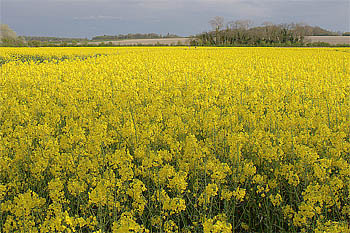Biography
I am a Canadian by birth who came to the United Kingdom in 1970 to pursue a PhD degree at Cambridge in organometallic chemistry. After a further postdoctoral year in Cambridge, I was appointed as Lecturer in Inorganic Chemistry at Keele in 1974 and was promoted to a personal chair of organometallic chemistry in 1996. I enjoy teaching organic and inorganic chemistry to Level II and Level III undergraduates and supervising the work of postgraduate students.
Research and scholarship
 My research is broadly in the area of the use of sustainable resources (rather than oil-based) and clean chemistry for the production of materials and chemical intermediates.
My research is broadly in the area of the use of sustainable resources (rather than oil-based) and clean chemistry for the production of materials and chemical intermediates.
Almost all of this work is done in collaboration with industrial companies and therefore has a highly ‘applied’ nature. For examples, we have recently developed a set of gold compounds which can be fired by laser to produce gold films on ceramic surfaces. This eliminates the need for thermal firing and the extensive use of organic solvents which are features of the current process.
We have also been looking at various food and non-food seed oil crops. For example, we have been using rapeseed oil as a replacement for adhesive components such as formaldehyde which is oil-based and recently classified as carcinogenic. We have also been working with a plant oil whose purified components show interesting medicinal properties.
See Further Information tab for more information on my research.
Further information
Research Interests
New Applications of Vegetable Oils
In recent years, the environmental and economic concerns inherent in the manufacture of chemicals and materials from finite petroleum oil reserves have driven a search for replacements derived from renewable and sustainable natural resources such as oilseed crops.
The cultivation and use of oilseed crops for both food and non-food purposes has been known since antiquity and in 2004, world production of oils from the seven major crops shown below totalled 380 million metric tons. Production continues to rise at the rate of about 3-4 % per annum; growth is particularly strong in developing countries where land is more available and where there is a desire to increase self-sufficiency in food crops in particular.
The composition of oils may vary between species and may depend slightly on the climatic and soil conditions. Plant breeding approaches have also been used to modify the composition of oils. For example, nutritionally superior (low in erucic acid) canola oil has been developed from rapeseed which was genetically modified through blocking of the biosynthetic pathway for fatty acid carbon chain elongation.
|
|
Yield (kg ha-1) |
C16:0a |
C18:0b |
C18:1 |
C18:2e |
C18:3 |
C20:1h |
C22:1i |
| soybean | 375 | 12 | 4 | 25d | 52 | 8f | 0 | 0 |
| linseed | 402 | 6 | 6 | 19d | 24 | 47f | 0 | 0 |
| tungj | 790 | 4 | 3 | 8d | 9 | 73g | 0 | 0 |
| sunflower | 800 | 7 | 4 | 16d | 73 | 0 | 0 | 0 |
| rapeseed | 1000 | 4 | 2 | 17d | 13 | 9f | 15 | 41 |
| canola | 1200 | 5 | 2 | 63d | 20 | 9f | 2 | 0 |
| castor oil | 1188 | 1 | 1 | 93c | 4 | 0 | 0 | 0 |
| oil palm | 5000 | 44 | 5 | 39d | 10 | 0 | 0 | 0 |
| coconut palmk | 2260 | 8 | 3 | 5d | 0 | 0 | 0 | 0 |
a palmitic acid. In the term C16:0, the number 16 denotes the number of carbons in the chain and the 0 indicates the number of C=3DC double bonds in the chain.
bstearic acid
c3% 9Z isomer (oleic acid) and 90% 9Z,12-hydroxy isomer (ricinoleic acid)
doleic acid only
e9Z,12Z isomer (linoleic acid)
f9Z, 11Z, 13Z isomer (linolenic acid)
g 4 % 9E, 11E, 13E isomer and 69 % 9Z, 11E, 13E isomer (?- and ?-eleostearic acids)
h 11Z isomer (eicosenoic acid)
i13Z isomer (erucic acid)
jdeciduous trees of the genus Aleurites native to eastern Asia
kcoconut palm oil also contains 7 % C8:0 (caprylic acid), 7 % C10:0 (capric acid), 51 % C12:0 (lauric acid) and= 18 % C14:0 (myristic acid)
Some oils contain organic functional groups which make them suitable for direct industrial application. For example, the OH function of ricinoleic acid in castor oil makes it suitable as a plasticizer for a variety of polymers. The high 18:3 content of tung oil and linseed oil makes these compounds suitable as ‘drying oils’. The ‘drying’ process itself involves polymerisation upon exposure to oxygen, followed by oxidative degradation to dicarboxylic acids. Recently, there has been a growing interest in applications in which the triglyceride motif is retained, particularly after epoxidation.
We have been particularly interested in developing new adhesive resins to replace currently used formaldehyde based resins which have now been classified as carcinogenic. Introduction of the poly(oxyethylene) groups to give 4 renders the product water compatible. Co-polymerisation with styrene (to give mechanical strength) and acrylic acid produces a resin which when cross linked through the acid residues can be used to produce a variety of composite materials such as ceramic tiles. We are currently pursuing other applications of these functionalised oils such as surfactants, paint additives and coatings.
We are also working on naturally occurring epoxidised oils such as vernonia oil obtained from the seeds of Vernonia Galamensis, a plant native to Ethiopia, which contains about 80 % of vernolic acid. Vernonia oil undergoes many of the polymer-forming reactions noted above centred on the epoxide ring. Unlike laboratory epoxidation, vernolic acid from Vernonia Galamensis is obtained as the single enantiomer shown, and in addition to resin synthesis, opportunities exist for fine chemical synthesis of agrichemical and pharmaceutical intermediates.
Organogold Compounds for Ceramic Decoration and Circuit Printing
The manufacture of decorated ceramic ware and other ceramic materials has been an area of vital economic and industrial importance in 'The Potteries' since the time of Josiah Wedgwood. While much of current pottery production has embraced modern technology for automation and formulation of materials, gold decoration of ceramics remains based mainly in technology developed in the 19th century with decoration applied either by hand painting or more recently using decals. In collaboration with the pottery industry, we have developed an alternative technology based on laser deposition which will replace the labour intensive manual operation with an automated process and which will operate as a solventless procedure, thus eliminating pollution (particularly in the workplace).
In this process, an aqueous film of the organogold precursor is applied to the ceramic surface, which is then irradiated with a laser of high precision. This decomposes the gold precursor to gold metal only at the areas of irradiation. Computer control of the laser head allows the deposition of complex designs with a high writing speed. The fineness of the laser beam makes the technique ideally suitable for the printing of gold circuits which have many applications in electronics and nanomaterials.
As these gold-carbene compounds are water soluble, we are also exploring their use in biolabelling and in chemotherapy.
Computational and Experimental Organometallic Chemistry
Our current interest in this area is directed towards the mapping the conformational space of phosphine (PR3) ligands. Phosphine ligands are vitally important in the selectivity observed in many organic reactions which are catalysed by transition metal-phosphine complexes. They influence this selectivity primarily through their steric size and profile. We have developed a new approach to looking at phosphine ligands through mapping of their conformational space using molecular mechanics. For example, the diagram below shows a 3-dimensional plot of energy versus the two twist angles of the phenyl rings in the molecule (CO)5CrP(Me)(o-tolyl)2.
Publications
School address
Lennard-Jones School of Chemical and Physical Sciences
Lennard-Jones Building
Keele University
Staffordshire
ST5 5BG, UK
Phone (School Office): +44 (0)1782 733033, (Chemistry): +44 (0)1782 731693, (Forensic Science): +44 (0)1782 731694, (Physics): +44 (0)1782 733527
Email: scps@keele.ac.uk
Information for schools and colleges
Programme directors
Chemistry and Medicinal Chemistry
Dr Tess Phillips
Tel : +44 (0)1782 733038
Email : t.r.phillips@keele.ac.uk
Dr Chris Hawes
Tel : +44 (0)1782 732820
Email : c.s.hawes@keele.ac.uk
Forensic Science
Dr Jamie K. Pringle
Tel : +44 (0)1782 733163
Email : j.k.pringle@keele.ac.uk
Physics and Astrophysics
Dr Arumugam Mahendrasingam
Tel : +44 (0)1782 733312
Email : a.mahendrasingam@keele.ac.uk
Admission tutors
Chemistry and Medicinal Chemistry
Dr Natalie Capel
Tel : +44 (0)1782 733584
Email : n.j.capel@keele.ac.uk
Forensic Science
Dr Natalie Capel
Tel : +44 (0)1782 733584
Email : n.j.capel@keele.ac.uk
Physics and Astrophysics
Dr Patrick Connell
Tel : +44 (0)1782 733892
Email : physics@keele.ac.uk or p.j.connell@keele.ac.uk


